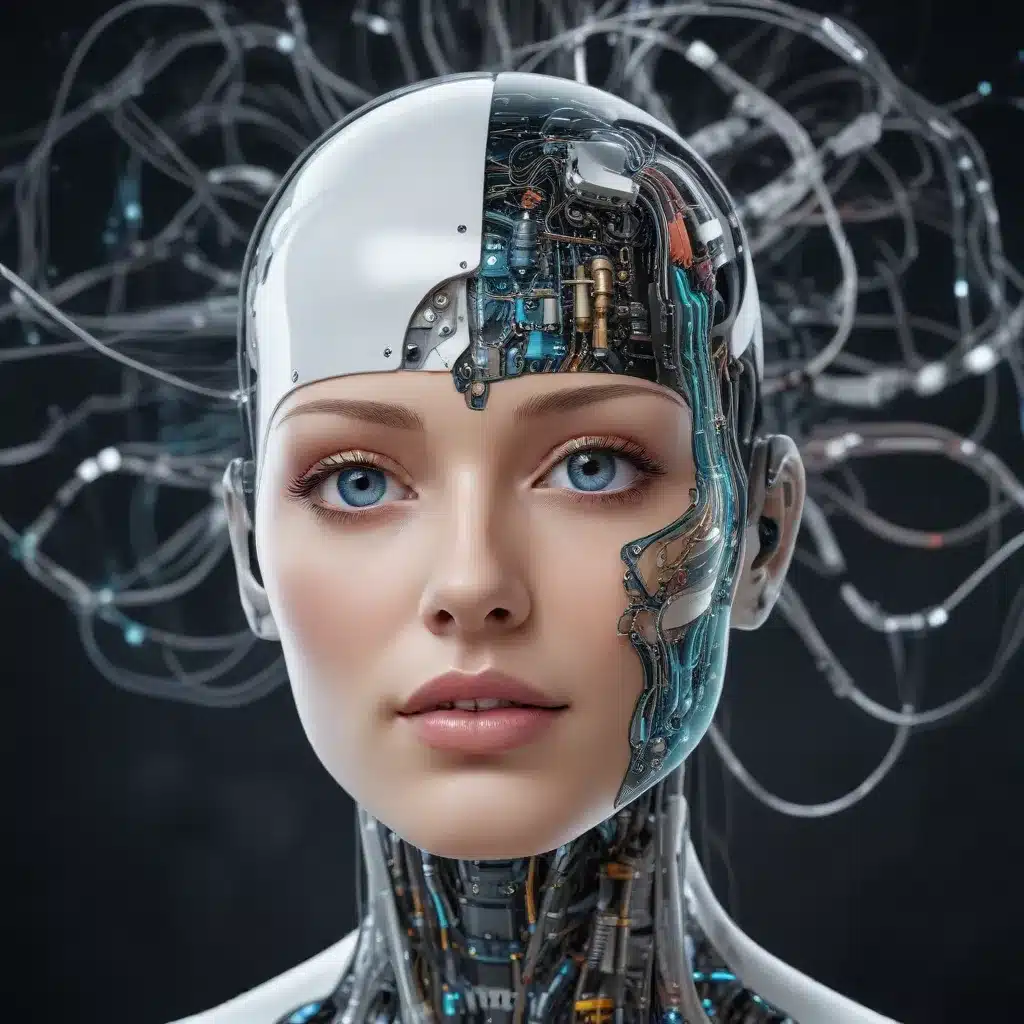
The Transformative Convergence of Generative AI and Industrial Metaverse
The rapid advancements in generative artificial intelligence (AI) have ushered in a new era of technological convergence, profoundly shaping the future of smart manufacturing and industrial operations. As the industrial metaverse emerges as a immersive digital twin of the physical world, the integration of generative AI capabilities is revolutionizing how we approach connected systems, multisensory data fusion, and human-AI collaboration in the factory of the future.
Generative AI and Cyber-Physical Manufacturing Systems
At the heart of this transformation lies the seamless integration of generative AI into cyber-physical manufacturing systems. Robotic cooperative behaviors, 3D assembly operations, and ambient environment monitoring in collaborative industrial environments are empowered by the interplay between generative AI planning software, computer vision and spatial mapping algorithms, and geospatial simulation tools. These advanced technologies enable fluid transitions between the virtual and physical realms, allowing for rapid prototyping, predictive maintenance, and process optimization within the industrial metaverse.
Modal actuators, sensors, and robot trajectory planning tools work in tandem with generative AI and cyber-physical manufacturing systems to enable scalable data computation processes in smart virtual environments. By leveraging context recognition, data acquisition, and deep/machine learning algorithms, these systems shape the factory of the future, optimizing tasks such as virtual path planning, collision-free motion, and coordinated robotic perception. The result is a significant boost in the economic performance and agility of smart manufacturing operations.
Multisensory Fusion and the Industrial Metaverse
The industrial metaverse is further empowered by the integration of multi-sensory extended reality (XR) and simulation modeling technologies. These tools seamlessly blend ambient intelligence, remote big data management, and cloud-based robotic cooperation to enhance IoT-based real-time production logistics and cooperative multi-agent controls in smart networked factories.
Generative AI-powered digital twin industrial metaverse builds upon the foundations of IoRT (Internet of Robotic Things) and production management systems, leveraging machine and deep learning algorithms to drive big data-driven decision-making and image recognition processes. Virtual simulation modeling and deep reinforcement learning enable autonomous manufacturing and virtual equipment systems, while deep learning-based object detection and spatial computing technologies further enhance the capabilities of networked immersive environments for industrial data processing.
Human-AI Collaboration in the Industrial Metaverse
As the industrial metaverse evolves, the role of human-AI collaboration becomes increasingly crucial. Cognitive data visualization and sensor fusion tools, combined with image recognition and computer vision technologies, enable tangible business outcomes by fostering intuitive interfaces and seamless interactions between human operators and intelligent systems.
Generative AI planning software, coupled with flexible industrial and cloud computing environments, empowers workers to leverage their expertise and intuition in harmony with the cognitive capabilities of the industrial metaverse. This synergy unlocks new avenues for process optimization, task scheduling, and decision support, ultimately leading to enhanced productivity, quality, and safety in smart manufacturing environments.
Bridging the Physical and Digital Realms
The convergence of generative AI and the industrial metaverse represents a transformative shift in how we approach industrial operations and production management. By blending the physical and virtual worlds, this integration enables a new level of automation, simulation, and data-driven decision-making that is poised to redefine the future of manufacturing.
As we delve deeper into this technological convergence, we witness the rise of a more resilient, adaptable, and sustainable industrial ecosystem, where human ingenuity and machine intelligence coexist in perfect harmony. The industrial metaverse, empowered by generative AI, is not merely a vision of the future – it is a reality that is rapidly shaping the way we manufacture, innovate, and create value in the global economy.
Embracing the Future: Practical Tips and Insights
Leveraging Generative AI for Digital Twin and Simulation
Embrace the power of generative AI to enhance your digital twin and simulation capabilities. Utilize deep learning models and virtual environment simulations to enable rapid prototyping, predictive maintenance, and process optimization within your industrial metaverse. Invest in computer vision and spatial computing technologies to seamlessly integrate the physical and virtual realms, streamlining production workflows and improving decision-making.
Implementing Multisensory Fusion and Ambient Intelligence
Integrate multi-sensory extended reality (XR) and simulation modeling technologies into your industrial operations. Leverage ambient intelligence, remote big data management, and cloud-based robotic cooperation to enhance real-time production logistics and enable more efficient, collaborative workflows within your smart factory. Explore machine learning and deep learning algorithms to drive data-driven insights and improve your IoT-powered production management systems.
Fostering Human-AI Collaboration
Empower your workforce by integrating cognitive data visualization and sensor fusion tools into your industrial metaverse. Utilize image recognition and computer vision technologies to create intuitive interfaces that facilitate seamless collaboration between human operators and intelligent systems. Embrace generative AI planning software and flexible industrial and cloud computing environments to unleash the synergy between human expertise and machine intelligence, driving enhanced productivity, quality, and safety in your manufacturing operations.
Navigating the Technological Convergence
As you embark on your journey to integrate generative AI and the industrial metaverse, keep the following tips in mind:
- Invest in Talent and Upskilling: Ensure your workforce is equipped with the necessary skills to navigate the technological convergence, fostering a culture of continuous learning and innovation.
- Prioritize Interoperability and Standardization: Collaborate with industry partners and standards bodies to ensure seamless integration and data exchange between your systems, enabling a more cohesive and efficient industrial metaverse.
- Embrace a Holistic Approach: Consider the broader implications of this convergence, including data security, privacy, and ethical considerations, to create a sustainable and responsible industrial ecosystem.
- Continuously Adapt and Innovate: Stay attuned to the rapidly evolving landscape of generative AI and the industrial metaverse, continuously refining your strategies and technologies to maintain a competitive edge.
By embracing the transformative power of generative AI and the industrial metaverse, you can unlock new frontiers of efficiency, productivity, and innovation in your manufacturing operations. The future of smart manufacturing is here, and the time to act is now.












